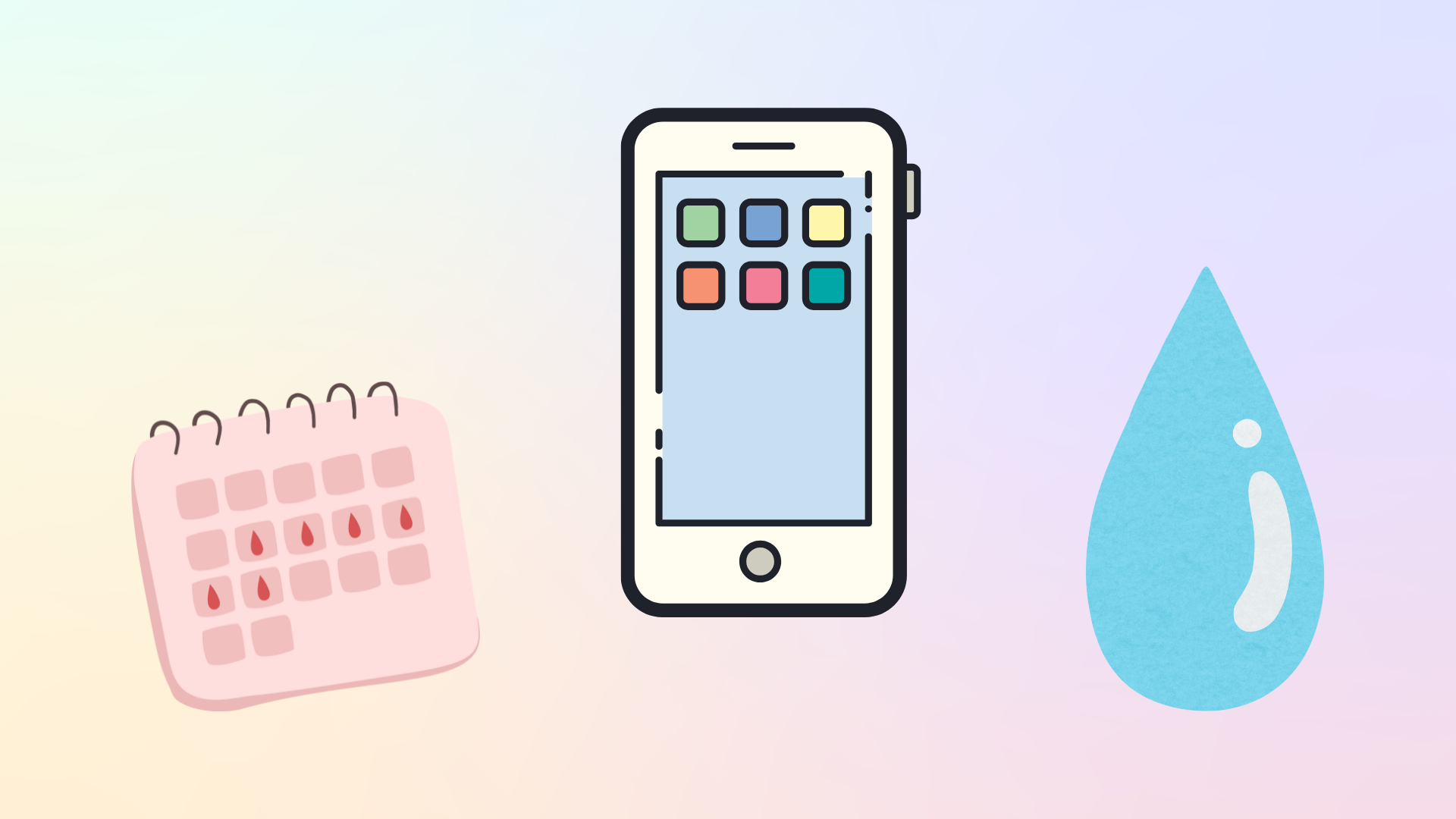How AI, Saliva, and Smartphones Could Soon Help People with Irregular Cycles Predict Ovulation

Menstrual monitoring technologies, like cycle tracking apps and over-the-counter ovulation prediction kits, have made waves in recent years. These technologies can empower users to better predict their bleed dates, understand their symptom patterns, and make informed choices for family planning. However, because many of these technologies were initially developed for people with regular cycles in mind, those who experience irregular cycles have been left without access to these otherwise empowering resources.
In a feasibility study newly published in JMIR, Mahalingaiah Lab researchers Peebles et al. explore whether it’s possible to use smartphones, artificial intelligence (AI), and saliva at home to help predict ovulation, especially for people with irregular cycles and PCOS. What they learned is already helping to inform future research and technology to be even better.
What is a feasibility study anyway?
Feasibility research, in short, asks “can this study be done?”
Scientists often conduct these preliminary studies to evaluate how practical and workable a research project actually is. This often occurs before investing the major time and/or resources needed to scale it up.

Finding out something doesn’t work is just as important as finding out that it does. Think of it like painting a swatch on the wall before you paint your whole room – what looks great in the can doesn’t always translate as expected in real life. And even painting that small swatch takes effort: you still need to gather supplies, decide on a color, prime the wall, and protect your floors. But when things dry and you take a step back, you can be confident that your efforts are supported by what you’re seeing in real life and that you can adjust your plans in response if needed.
In feasibility studies, scientists look at factors like whether participants are able to stay engaged, if the study timeline is realistic, or whether people can successfully use the technology involved. The goal is to identify successes and challenges early, so future studies are as effective and user friendly as possible.
Why was this feasibility study completed?
Most over-the-counter ovulation prediction kits are designed to show when ovulation is about to occur by checking for an increase of something called luteinizing hormone (LH) in urine. These tests work well for people whose cycles are regular where the increase in LH happens in the middle of the menstrual cycle. But for people with ovulation disorders, like PCOS, their cycles are less predictable and the hormone surges don’t always happen at the same time each month. Traditional urine tests can be unreliable for people with irregular cycles as a result.
Thanks to AI, say the researchers, it’s now possible to analyze patterns from many different people to develop new and better prediction methods. However, before launching a larger scale project on using AI and saliva-based technology for ovulation prediction, the team had several big questions.
- Would people with irregular cycles be able to consistently follow the study procedures, like daily sample collection?
- Would they stay actively involved with the study tasks and technology throughout the process?
- And, would participants remain in the study all the way to the end, or would it become too much in the context of their everyday lives?
How the study was conducted
The team recruited people from the Boston area with different menstrual cycle lengths, including those diagnosed with PCOS.
For up to two cycles, participants:
- Collected and shared daily saliva samples with the research team;
- Logged their information through an easy-to-use phone app;
- And completed a few lab visits and surveys.
Participants were led through the full study process, including paperwork and eligibility steps required. Despite initial enthusiasm, only a handful of participants completed every step through to the end.
Wait, how did the researchers detect ovulation using saliva?
Around ovulation, patterns in your dried saliva can hint at where you are in your cycle. This is called “ferning,” because the pattern looks like little fern leaves under a microscope. Mahalingaiah Lab researchers are working on training AI to recognize ovulation patterns from these images, so the common smartphone could one day become an advanced ovulation tracker.

(Fig. 1, left: Priya et al., 2020; Fig 2, right: U.S. Forest Service, 2025)
What did the researchers learn about the feasibility of this study?
Many study participants found the daily routine manageable, but others said things like irregular cycles or busy schedules made it hard to keep up. Some participants dropped out because their cycles were too unpredictable, or they found it stressful to monitor their ovulation so closely.
The number of participants that were able to successfully complete all of the steps after enrollment was lower than expected, but that doesn’t mean it was a failure. In the world of scientific research, every type of outcome is valuable. This study taught us a lot about what would be needed to have better results in the future.
Why does this matter?
Research of this kind could lead to an innovative, accessible ovulation predictor designed for people with irregular cycles. Imagine using your phone to track unique changes in your saliva and getting fertility information personalized for you – not just the “average” user.
This new approach offers hope for people who have struggled to find answers and the confidence to manage their own health. While there’s still work to do, the future is promising: AI might soon make ovulation prediction easier, smarter, and more accurate than ever before.
Monitoring your menstrual cycle at home
When it comes to your body and reproductive health, knowledge is power. Monitoring your period and treating the menstrual cycle as a vital sign could lead to earlier detection of many health and gynecologic conditions.
Using a menstrual cycle tracking apps allows you to log details such as period dates, blood flow, and symptoms such as mood, food cravings, headaches, acne, or cramps. There are many other ways to monitor your own cycle, though – including through pen and paper. What’s most important is that you find a method that works for you.
References
1: E. Peebles, W. Finlay, T.-M. Nguyen, S. Barrett, P. Thirumalaraju, M. K. Kanakasabapathy, H. Kandula, C. Sarcione, K. E. James, H. Shafiee and S. Mahalingaiah, “Digitally Enabled AI-Interpreted Salivary Ferning-Based Ovulation Prediction: Feasibility Study,” J Med Internet Res, August 2025.
2: Apple Women’s Health Study, “Menstrual cycle length and variability: a visual explanation,” September 2023. [Online]. Available: https://awhs-updates.hsph.harvard.edu/cycle-length-variability/
3: B. S. Priyaa, M. Pushpajaa, A. S. kumarb and K. Maruthy, “Does the salivary fern pattern determine fertile period in reproductive female?,” Clinical Epidemiology and Global Health, vol. 8, no. 3, pp. 698-701, 2020.
4: U.S. Forest Service, “Fern Structure,” [Online]. Available: https://www.fs.usda.gov/wildflowers/beauty/ferns/structure.shtml. [Accessed August 2025].
5: Apple Women’s Health Study, “Benefits of tracking your period,” October 2020. [Online]. Available: https://hsph.harvard.edu/research/apple-womens-health-study/study-updates/benefits-of-tracking-your-period/.
6: E. Huffman, “How Menstrual Cycles Shed Light on Overall Health,” 18 July 2025. [Online]. Available: https://hsph.harvard.edu/mahalingaiah-lab/news/how-menstrual-cycles-shed-light-on-overall-health/.
7: Our Bodies Ourselves, “Charting Your Menstrual Cycle,” [Online]. Available: https://ourbodiesourselves.org/health-info/charting-your-menstrual-cycle. [Accessed August 2025].


